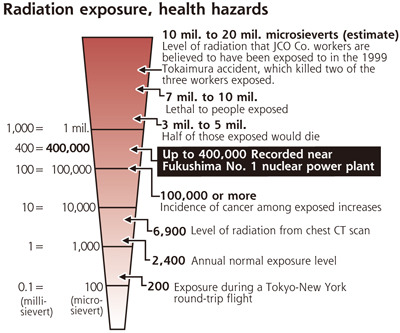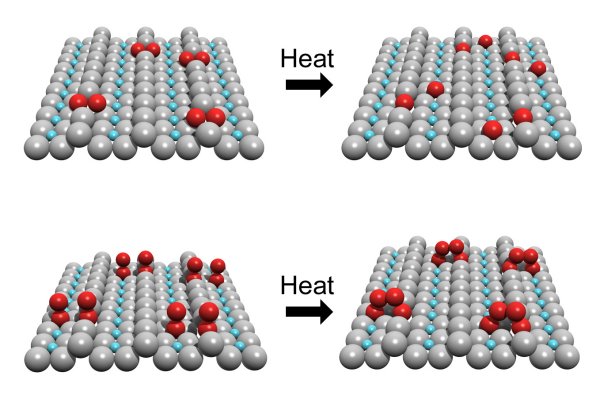While "combo pilling" has gained popularity among dieters and some doctors in recent years, some experts warn it may not be worth the risks
“Do you want to come back to that question?” the interviewer on the phone asked.
Jennifer Sibley’s mind went blank. She gripped her cordless a little tighter and looked around her home office. No, she didn’t want to come back to that question; as a seasoned advertising executive who’d been unemployed for a year, she wanted to nail the question and get the job. She’d already downloaded plenty of research about her potential employer and had a file of notes on her computer screen to help her produce a good answer. But she couldn’t seem to focus; the interviewer’s words just eddied around in her brain. The more she tried to grab onto an idea, the less she succeeded.
She didn’t get that job. Nor did she get the next one, with a chamber of commerce, after another interview (face to face this time) in which she couldn’t compose her thoughts. “That’s when I stopped taking the pills,” recalls Sibley, who lives in central Pennsylvania. “I came home and thought, It’s not worth it. These drugs are making me nutty.”
“These drugs”—phentermine, an appetite suppressant she bought on the Internet, and topiramate (brand name Topamax), an anticonvulsant she got from her family doctor—weren’t supposed to make Sibley flaky; they were intended to help her drop the extra five to 10 pounds she’d been unable to lose while unemployed. Faced with a dieting plateau, Sibley had turned to what’s known as combo-pilling, taking two medications that together are supposed to bring about more weight loss, with fewer side effects, than one alone. The cocktail Sibley chose is nicknamed phen-Topamax, but many other possible couplings, composed of appetite suppressants, antidepressants and other drugs, are being used.
Combo-pilling has been gaining appeal among dieters, doctors and pharmaceutical companies, in part because single diet drugs have not been a great success. After sibutramine (Meridia) was taken off the market last October, there was only one drug left that was approved by the FDA for treating obesity for more than a few weeks: orlistat (Xen-ical by prescription or Allī over the counter). But even though orlistat is the only long-term option for consumers, many dieters eschew it because they can experience side effects (oily stains on their underwear, for example) if they eat fat-heavy meals. To many, combo-pilling begins to seem like the answer.
While there are no comprehensive data on how many Americans are taking two diet drugs simultaneously, a study in the March 2009 issue of Obesity revealed that 65 percent of weight specialists belonging to the American Society of Bariatric Physicians who responded to a survey are prescribing unapproved, or “off label,” drug combinations like phen-Topamax. This practice is perfectly legal. In fact, one out of five common drugs for adults is prescribed off label, according to a well-regarded 2006 analysis in the Archives of Internal Medicine.The theory is that as long as a drug has been approved and is on the market, physicians may use it as they see fit. However, while this leeway has created some happy surprises (such as the discovery that migraines can be treated with Botox), it also exposes patients to a medical gray zone where, without FDA-vetted research, they are completely dependent on the wisdom of their doctors.
One result: Most of the drug combos being used by dieters have not been tested in clinical trials conducted by drug companies or in rigorous studies led by academic researchers. There are also safety issues. For instance, when a drug manufacturer tried to market a single pill called Qnexa that combined the two medications Sibley took (although in different doses), the FDA rejected it over concerns about birth defects and cardiovascular risks. Yet both doctors and patients can point to success stories in which these medication regimens have led to weight loss without evident health damage.
Ultimately it’s up to each individual, in consultation with her physician, to decide whether the benefits of combo-pilling are worth the risks. Here, More takes a closer look.
Birth of a Notion
The idea of combo-pilling diet drugs was born on a wintry Midwestern day in the 1980s, when a pharmacologist from the University of Rochester was snowed in at the Kansas City airport. Stranded with his books, he ended up reading about two appetite suppressants on the market that didn’t work that well, especially long term. “What struck me,” says the scientist, Dr. Michael Weintraub, “was that the side effects were this and that with one of the drugs, and the opposite—that and this—with the other.” Hoping the drowsiness caused by one might cancel the jitteriness associated with the other, “I decided to try them together,” he explains.
In a study published in 1992, Weintraub conducted a now-famous trial on 121 subjects and found that the combination of phentermine, a stimulant, and fenfluramine, a medication that increases the release of serotonin in the body, worked like two fingers crossing for good luck. After eight months, people on the double regimen—later known as fen-phen—lost an average of 32 pounds, and the combo was an enormous hit.
You may remember the ending to the fen-phen story. On September 15, 1997, one half of the duo, fen-fluramine, was withdrawn from the market because it was associated with heart-valve disease. But the double-drug concept had established itself in the minds of the dieting public. “Fen-phen was the first time in world history that long-term weight loss could be maintained by using a combination of two drugs,” says Robert Skversky, MD, head of the Weight No More clinics in Southern California, which at the time of the fenfluramine withdrawal were doing a booming business in fen-phen. Skversky also reports that two of his patients, including one relative, developed pulmonary problems he believes were related to the drug combo.
An Antidepressant Cocktail
The phen side of fen-phen is still available, but to be a real diet aid, it needs a dance partner. For one thing, the use of phentermine, a chemical cousin of amphetamine and a controlled substance, is approved only for a few weeks. It does make hunger fade, but over time, weight loss tends to peter out. What fen did was keep phen going in an exciting quickstep—a Fred Astaire sweeping his Ginger Rogers to magical heights. Ever since fenfluramine was taken off the market, physicians have been looking for a replacement.
In 1994, three years before fen became unavailable, Michael Anchors, MD, a weight specialist with a PhD in biochemistry from Harvard and a practice in Gaithersburg, Maryland, discovered a new partner for phen pretty much by accident. “I had about a dozen patients on fen-phen, but the fenfluramine was expensive,” he recalls. “So I asked a colleague how the combo worked. He said, ‘Well, it’s thought that it’s an SSRI,’ ” a kind of antidepressant. Anchors wondered why he couldn’t use other, cheaper SSRI drugs, like Prozac. And when he tried the phentermine-Prozac combo (Phen-Pro), his patients lost weight. “A year after that, it became known that fenfluramine is not an SSRI drug,” he continues. “So my initial reason for doing it was wrong. I was just lucky that it worked.” (Both Prozac and fenfluramine affect the mood--related neurotransmitter serotonin, but in different ways.)
While Anchors holds a patent on Phen-Pro, no manufacturer has yet decided to produce the combo as a single pill. Eli Lilly, the maker of Prozac, conducted preliminary research but decided not to move forward. (“Lilly does not recommend the combination of Prozac with other medications as a treatment for weight loss,” says company spokeswoman Sonja Popp-Stahly, adding that Lilly does not recommend the off-label use of any drug.)
Anchors says he is best at treating the overweight or moderately obese. “I get 90 percent to lose at least a quarter of their total body weight,” he boasts. A key to his success, he feels, is that he spends a half hour speaking with each patient, trying to change how she relates to food. It helps, he points out, that the Phen-Pro combo does “kill the hunger in everybody.” Continue here.

















 v
v rt)
rt)










































